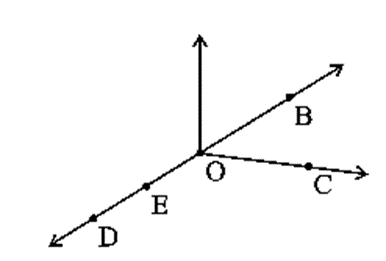CLASS 07 ORAL TEST TERM2
WATCH IT ON FLIP BOOK : CLICK HERE
Class 7 Maths oral test
Periodic test 2
Write denominator of given rational number : 5 �
(a) 1
(b) 0
(c) 3
(d) none of these
The numbers ________ and ________ are their own reciprocals. �
(a) -1 and 0
(b) 1 and 0
(c) 1 and -1
(d) None of these
How many lines can draw from a given point. �
(a) 1
(b) 2
(c) Infinite
(d) None of these
Find the area of a circle having radius 14 cm. �
(a) 196 cm2
(b) 308 cm2
(c) 616 cm2
(d) None of these
Find the breadth of a rectangular plot of land, if its area is 440 m2 and the length is 22 m. �
(a) 20 m
(b) 5 m
(c) 15 m
(d) 10 m
One of the sides and the corresponding height of a parallelogram are 4 cm and 3 cm respectively. Find the area of the parallelogram. �
(a) 12 cm2
(b) 7 cm2
(c) 6 cm2
(d) None of these
A gardener wants to fence a circular garden of diameter 14 m. Find the length of the rope he needs to purchase. �
(a) 44 m
(b) 28 m
(c) 88 m
(d) None of these
The area of triangle is �
(a) (1/2 ) × base × height
(b) (1/2 ) × (base + height)
(c) base
(d) height
Find radius of a circle of diameter 9.8 m. �
(a) 4.9 m
(b) 19.6 m
(c) 10 m
(d) None of these
Write an expression : Raju s father s age is 5 years more than 3 times Raju s age. If Raju s age is x years, then father’s age is �
(a) 3x – 5
(b) 3x + 7
(c) 5 – 3x
(d) 3x + 5
For what value of ‘m’ is 9 − 5m = (−1)? �
(a) −1
(b) −2
(c) 2
(d) 1
An expression which contains two unlike terms is called _______. �
(a) binomial
(b) monomial
(c) trinomial
(d) None of these
The number z is multiplied by itself, write its algebraic expression.�
(a) 2z
(b) z2
(c) 2z
(d) None of these
Get the algebraic expression of subtraction of z from y. �
(a) z – y
(b) y – z
(c) – z + y
(d) None of these
Find the value of 7a – 4b if a = 3, b = 2. �
(a) 17
(b) 29
(c) 13
(d) None of these
What is the co-efficient of y in the given algebraic expression 8 + yz. �
(a) 8
(b) 1
(c) z
(d) None of these
Identify the co-efficient of x in the given expression : 4x – 3y. �
(a) 4
(b) -3
(c) 4x
(d) None of these











































